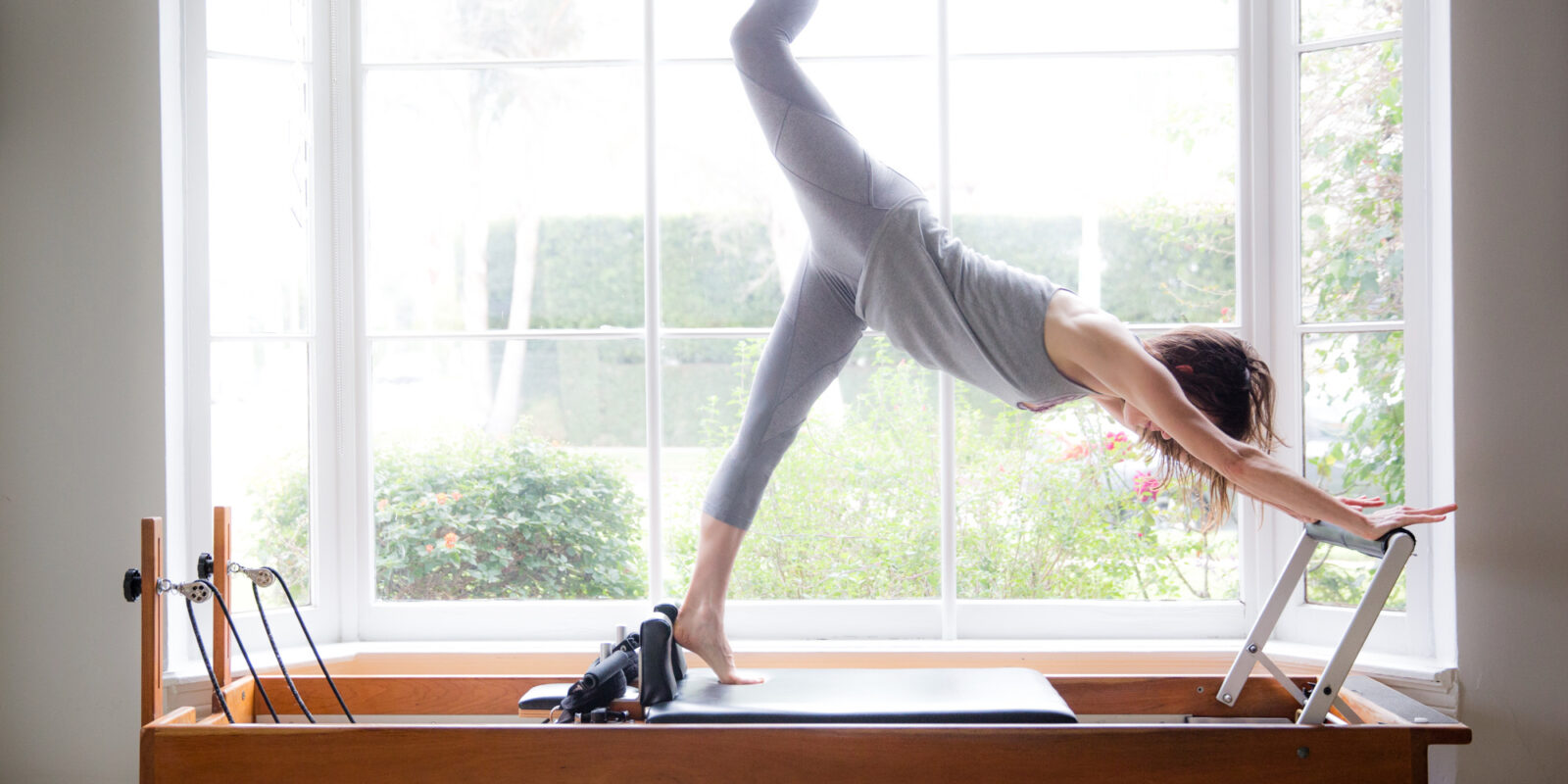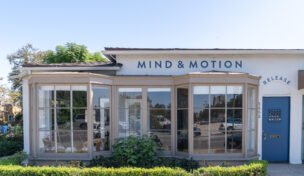
The Benefits of Pilates
Sep 16, 2022 - Jennifer DeValue
Pilates. It’s one of those elusive exercise buzzwords you hear, but don’t quite understand. You know people swear by Pilates’ benefits, but you may have never tried it out for yourself. Even if you are “in the know” regulars you might not fully comprehend all the fancy kinesthesiology and mindfulness information that goes into putting together the perfect exercise regime.
I was in the same boat until I met Meghan and began to learn from her impressive know-how and personal journey.
There’s no better time to jump into learning than “back to school” season. Here at Mind & Motion, we wanted to capture that “new year, new me” energy with a 20 Day Beginner Pilates program. This series was created to help you start gaining strength, mobility and alignment. Building a daily routine around these quick and easy videos will also help you enjoy a more relaxed and mindful approach to your personal wellness journey.
With the right guidance, Pilates is highly accessible and beginner-friendly. Depending on your preferences and scheduling concerns, it can be done in full privacy in your residence or with others in a studio. People of all ages can benefit from the physical and mindfulness techniques Pilates has to offer. Namely, increased flexibility, strengthened muscles, and even mental health.
Today we’ll cover what Pilates is, which functions it supports in our bodies, and why it (sometimes) uses equipment.
History of Pilates
Named for its developer, Joseph Pilates, the now name-recognized form of exercise was created primarily as a method of injury recovery. Originally, it was specially designed to cater to the needs of dancers whose muscles were being strained by overuse.
Supplementing your exercise regime with Pilates found mainstream popularity in the early 2000’s. Ever since then, wellness professionals of many diverse backgrounds have enjoyed playing a supportive role in how people understand and move their bodies. You can read all about Meghan’s passion for helping others and teaching in Part 1 of our interview here.
Nowadays, it is both a hobby and tool for therapeutic and preventive medical concerns. It’s also a fitness and conditioning practice.
What “Genre” of Exercise is Pilates?
Rather than promoting weight loss or muscle growth, Pilates is all about stability maintenance and muscle toning.
It works by focusing your attention on specific parts of the body. Through precise, repetitive movement of one section, you also improve the functionality of your whole physique. That’s because every muscle in our body is connected in an intricate system.
To improve our physiology, or how our bodies work, Pilates offers both strength and mobility training. What really sets it apart, though, is it’s focus on mindfulness. Together, these components create a wholistic approach that will boost your mood and improve your quality of life.
Strength Training
Strength training, aka resistance training, refers to exercises that apply resistance such as dumb bells, machines, or bodyweight. The added challenge to our muscles results in many benefits such as:
- Muscular Strength
- Muscular Endurance
- Muscular Control
- Metabolism Boosts
Muscle mass diminishes as we age, but Pilates can help preserve it. These exercises contribute to the body’s longevity and have even been known to help manage chronic conditions (think arthritis, heart conditions, and more). It even improves our bone density, thus reducing our risk of osteoporosis.
Mobility Training
Mobility training refers to exercises that increase our body’s flexibility and range of motion. Everyone can benefit from more range of motion. The exercises are designed to increase range at every joint (including fingers and toes!). Pilates promises:
- A Flexible Spine
- Increased Range in Hips and Shoulders
- A Fluid Mobile Body
Being aware of how our bodies work and feel can improve how we move through life. We don’t always pay attention to everything that goes into getting out of a seated position, or reaching for that thing we need on the top shelf. Pilates keeps us from taking those motions for granted and helps us keep doing them well into our lives.
Mindfulness
Pilates is considered a mindfulness practice because it requires self-awareness. Part of the practice involves education. I’m not talking about an anatomy lesson with notes and all that, but you will learn alot about how your body is designed to move. This information will both help you move better right now and understand how your body is aging along the way. A Pilates practice will you give you:
- Increased Body Awareness
- Decreased Stress Levels
- Improved Breathing Techniques
Adapting mindfulness into our lifestyles is great for both the natural-born athletes and poindexters among us. That’s because the mind-body connection needs to be nurtured as a whole instead of fulfilling the needs of our mind and body as two separate entities. Harnessing that connection through Pilates has a wide array of mental health benefits
How Does Pilates Benefit My Body?
Pilates has benefits for the FULL body. On the mat, we work and stretch every inch of our physiology. Plus, when I say “full” body I mean it. Pilates doesn’t just work out our muscles, it supports our cardiovascular, digestive, and nervous systems. So much so that maintaining a Pilates practice can even boost mental and chronic health conditions.
Physiological Benefits:
- Strengthen Muscles
- Realign Skeletal Structure
- Prevent Injuries
- Manage Blood Sugar
Mental Health Benefits
- Increase Motivation & Confidence
- Enhance Mood
- Decrease Stress and Anxiety
- Regulate Hormones
This is why Pilates is so versatile! Mentally and physically, Pilates will challenge you where you need strengthening and offer flexibility where you need more movement. The same exercise could feel totally different to two different people.
Why Does Pilates Use Equipment?
Pilates can be done anytime, anywhere with what you have at your disposal. Our entire membership on the Virtual Studio is so accessible that’s meant to be done at home on the mat.
That being said, something that keeps Pilates innovative and fresh is the equipment that has been designed especially for the exercise.
These “apparatuses” come in large and small forms. Many can be improvised from the comfort of your own home. However, the specialized equipment you see around a Pilates studio have particular uses that are worth looking into.
Large Equipment
The piece of large Pilates equipment with the most name recognition is the Reformer. Both old school and innovative forms of this apparatus use a spring, footbar, and gear systems that determine the tension and resistance you experience during a session. It is an overall assist to physical goals such as diaphragmatic breathing, improved posture, and coordinated movements.
In addition to other equipment, there are many variations and add-ons for reformers. These include:
- The Tower
- The Cadillac/Trapeze Table
- The Ladder Barrel
- The Pilates Chair
Because these apparatuses are complex and Pilates-specific, they are best discovered through the guidance of an instructor.
Small Equipment for Mat Work
When we lie down on our mats in pilates, we are fully supported by the ground underneath us. This offers a tremendous amount of support and why pilates is used so often in rehabilitation.
To supplement this support, we may introduce bands, springs, and rollers. One particularly “brand name” piece of equipment that was designed by Joseph Pilates himself is the Pilates ring, aka magic circle. The equipment used in mat work is helpful for adding the resistance needed for an extra challenge. This strengthens and tones our muscles in a palpable, but not strenuous way.
Takeaways
(Re)starting a Pilates routine can amplify your self-care or family bonding time this “back to school” season. We often think of a workout as “tiring,” but Pilates is both rejuvenating and reinvigorating.
Pilate’s combination of strength and mobility training supports the strength, flexibility, and balance of our bodies. People of all ages can benefit from these repetitive, focused movements but it is especially helpful for those experiencing chronic illness, surgical recovery, (post)pregnancy, and aging.
Pilates also qualifies as a “mindfulness practice” due to it’s philosophy about nurturing the mind-body connection. Many mental health conditions are actually responses to the sensory input and output of the body. So taking time to learn how to control our breathing and relax our muscles are tools we can take from our Pilates sessions and apply to our everyday lives.
There is no “pay gate” of expensive or bulky equipment. You can find everything you need either at your chosen studio or in your pantry (canned goods make for great improvised weights).
Just getting on and off the mat regularly is a habit that increases your physical and mental wellness. So try it out today with our free beginner mat class!
Still have questions? Feel free to ask Meghan anything you want. Plus, we’ve got an accepting, supportive community that loves to engage with one another on both Facebook and Instagram. Feel free to drop by and share whatever experiences or thoughts our journal entries evoke.





